Shaping the Future of Longevity Medicine
The quest to extend human healthspan and lifespan has transitioned from speculative science to an accelerating field of multidisciplinary research and innovation. Preventive longevity medicine is emerging as a transformative paradigm, shifting healthcare from reactive treatment to proactive optimization. This article explores the scientific foundations, cutting-edge technologies, emerging therapies, and societal considerations that collectively define the future landscape of longevity medicine. We delve into the mechanisms of aging, innovative diagnostic and therapeutic tools, the role of artificial intelligence, and insights from global initiatives that are propelling this field toward widespread clinical application. As we navigate challenges and opportunities, a comprehensive narrative unfolds—one that envisions a healthier, longer-lived future.
The Foundations of Longevity Science: Understanding Aging Mechanisms
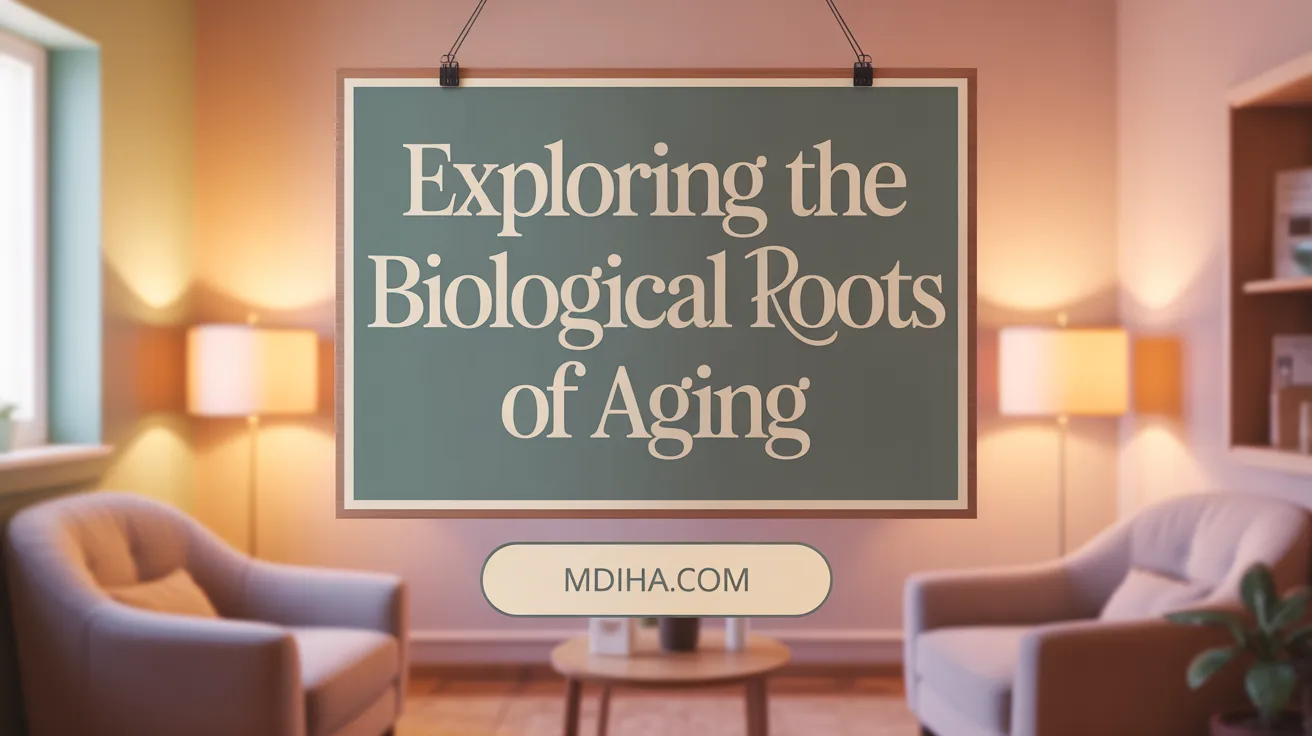
What are the current and emerging scientific research findings, mechanisms, and concepts in longevity science?
Recent advances in the field of aging research have highlighted several interconnected biological processes, often referred to as the hallmarks of aging. These include genomic instability, telomere attrition, epigenetic changes, loss of proteostasis, deregulated nutrient sensing, mitochondrial dysfunction, cellular senescence, and stem cell exhaustion.
Genomic instability relates to accumulated DNA damage over time, leading to cellular malfunction. Telomere shortening, the gradual erosion of chromosome end caps, actuates cellular aging and limits regenerative capacity. Epigenetic alterations involve age-related changes in gene expression regulation that influence cellular behavior.
Loss of proteostasis refers to the decline in the cell's ability to maintain protein quality control, resulting in dysfunctional proteins. Deregulated nutrient sensing pathways, such as mTOR and AMPK, affect cellular growth and metabolism, impacting aging processes.
Of particular interest are mitochondrial dysfunction and energy metabolism. Mitochondria, the cell’s energy producers, suffer functional decline with age, leading to reduced energy supply and increased oxidative stress.
Cellular senescence constitutes a state where cells stop dividing but remain metabolically active, secreting inflammatory factors that contribute to tissue dysfunction. Stem cell exhaustion diminishes tissue regeneration, further promoting aging.
Emerging research emphasizes that these mechanisms are not isolated but form a complex network influencing each other.
How do these mechanisms inform potential interventions?
Understanding these aging mechanisms guides the development of therapies aimed at delaying or reversing age-related decline. Strategies include targeting mitochondrial health through NAD+ boosters, removing senescent cells with senolytics, and repairing genomic and epigenetic damage. Focus on energy metabolism is central because mitochondrial dysfunction and metabolic failures are at the heart of aging, making pathways involved in cellular energy regulation promising intervention targets.
In summary, the comprehensive understanding of aging's biological basis offers multiple avenues for innovative therapies designed to extend healthspan and lifespan. Ongoing research continues to unravel these complex mechanisms, fostering hope for effective longevity interventions in the future.
The Longevity Pyramid: A Conceptual Framework for Interventions

What are the current and emerging scientific research findings, mechanisms, and concepts in longevity science?
The Longevity Pyramid provides a structured approach to understanding interventions aimed at extending both lifespan and healthspan. It comprises various levels, beginning with diagnostics and biomarkers, advancing through lifestyle and dietary modifications, and progressing into personalized treatments and experimental therapies.
At its foundation are cutting-edge biomarkers like DNA methylation clocks, telomere length measurements, and immune system assessments. These tools help predict biological age and disease risk, providing early detection of aging processes. Emerging research also explores organ-specific clocks, gut microbiome composition, and neuroendocrine mechanisms, all contributing to a comprehensive picture of biological aging.
Building on diagnostics, the next level emphasizes lifestyle interventions such as exercise, diet, and oral health, which influence systemic inflammation, cellular health, and metabolic pathways. Nutritional strategies like caloric restriction, intermittent fasting, and plant-based diets have shown promise in delaying aging markers and age-related diseases.
Pharmacological advancements include drugs like metformin, rapamycin, and NAD+ boosters, along with senolytics that target senescent cells. Non-pharmacological approaches involve therapies like hyperbaric oxygen and light treatment, which support cellular repair and mitochondrial function.
Experimental innovations such as gene editing, stem cell therapies, and rejuvenation biotechnologies aim to repair age-related damage at the cellular and tissue levels. Ethical considerations and regulatory frameworks are evolving concurrently to guide safe application.
The Pyramid embodies a holistic side-by-side approach—integrating biological insights with behavioral and technological strategies—to push the boundaries of aging science. As research uncovers deeper mechanisms like mitochondrial health, hypothalamic inflammation, and epigenetic alterations, interventions will become increasingly targeted, offering novel pathways to extend healthspan and potentially lifespan.
Biomarkers of Aging: From Research Tools to Clinical Potential
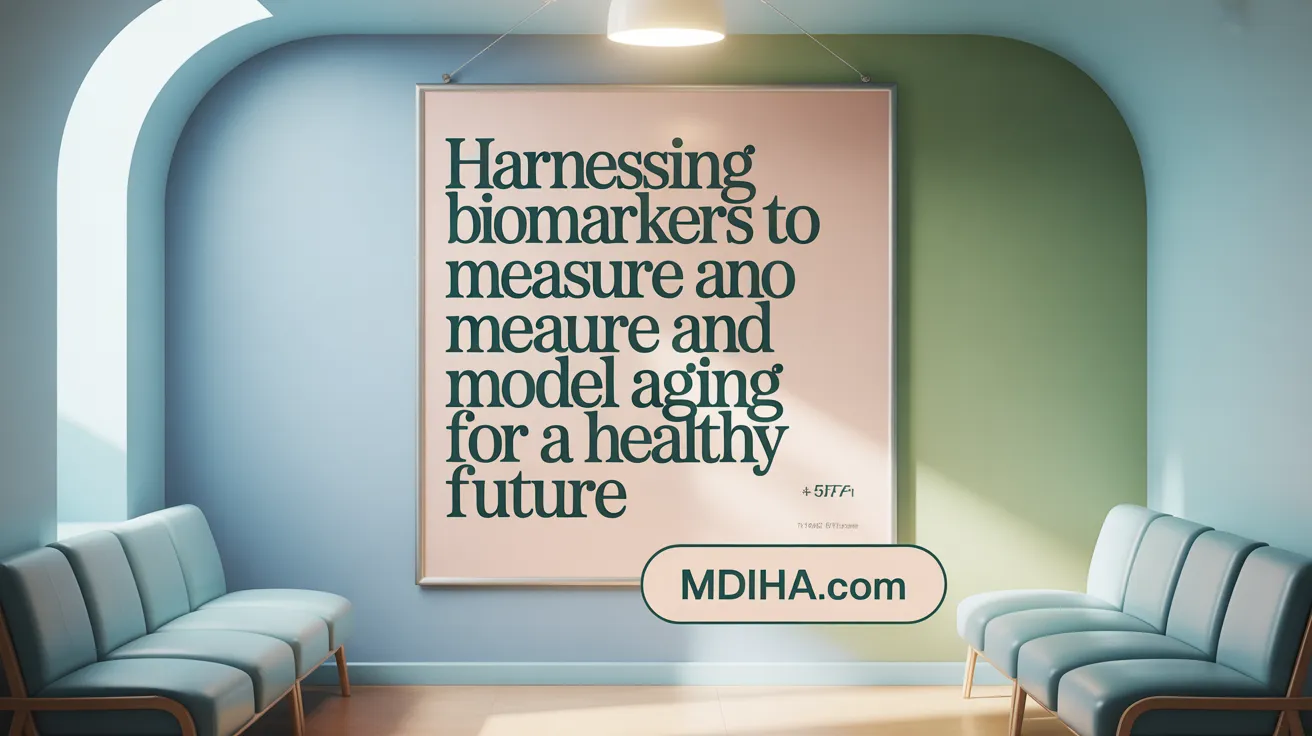
What are epigenetic clocks and DNA methylation?
Epigenetic clocks, based on patterns of DNA methylation, are emerging as promising biomarkers for biological aging. These clocks analyze chemical modifications on DNA that change predictably as we age, helping to estimate an individual's biological age more accurately than chronological age alone. Despite their potential, these tools still lack full clinical validation and are primarily used in research settings to gauge aging processes and disease risk.
How does telomere length and immune biomarkers contribute to aging assessment?
Telomere length, the protective caps at chromosome ends, shortens with each cell division and has been linked to aging and age-related diseases. Short telomeres are associated with increased mortality risk, though their utility as a standalone clinical marker remains under investigation.
Immune system biomarkers, including measures of immunosenescence and inflammageing, offer insights into aging by reflecting immune health deterioration. These markers can help predict disease susceptibility and functional decline but require further validation for routine clinical use.
How are wearable technologies helping to measure biological age?
Advances in wearable devices like smartwatches and fitness trackers enable real-time monitoring of vital signs such as heart rate variability, activity levels, and sleep patterns. Combined with algorithms, these data help generate estimates of biological age, offering personalized insights into aging and health status. While promising, these tools are still refining accuracy and need validation before widespread clinical adoption.
What are the regulatory and validation challenges?
Currently, significant gaps exist in standardizing aging biomarkers for clinical application. A lack of regulatory frameworks and consensus on validation criteria hampers their translation into practice. Establishing international standards and reliable validation processes is essential to ensure these biomarkers can guide safe and effective interventions.
| Biomarker Type | Current Status | Challenges | Future Directions |
|---|---|---|---|
| Epigenetic clocks | Research mainly | Need validation as clinical endpoints | Development of standardized protocols |
| Telomere length | Used in research | Variability and measurement issues | Integration with other biomarkers |
| Immune biomarkers | Emerging | Not yet standardized | Improving predictive accuracy |
| Wearable tech data | Increasing adoption | Accuracy and validation | Enhanced algorithms and validation panels |
| Regulatory landscape | Gaps exist | Lack of global standards | Development of international guidelines |
As research progresses, bridging these gaps will be crucial for leveraging biomarkers to accurately assess aging, predict health outcomes, and guide effective interventions.
The Shift from Lifespan to Healthspan: Aligning Priorities with Scientific Goals
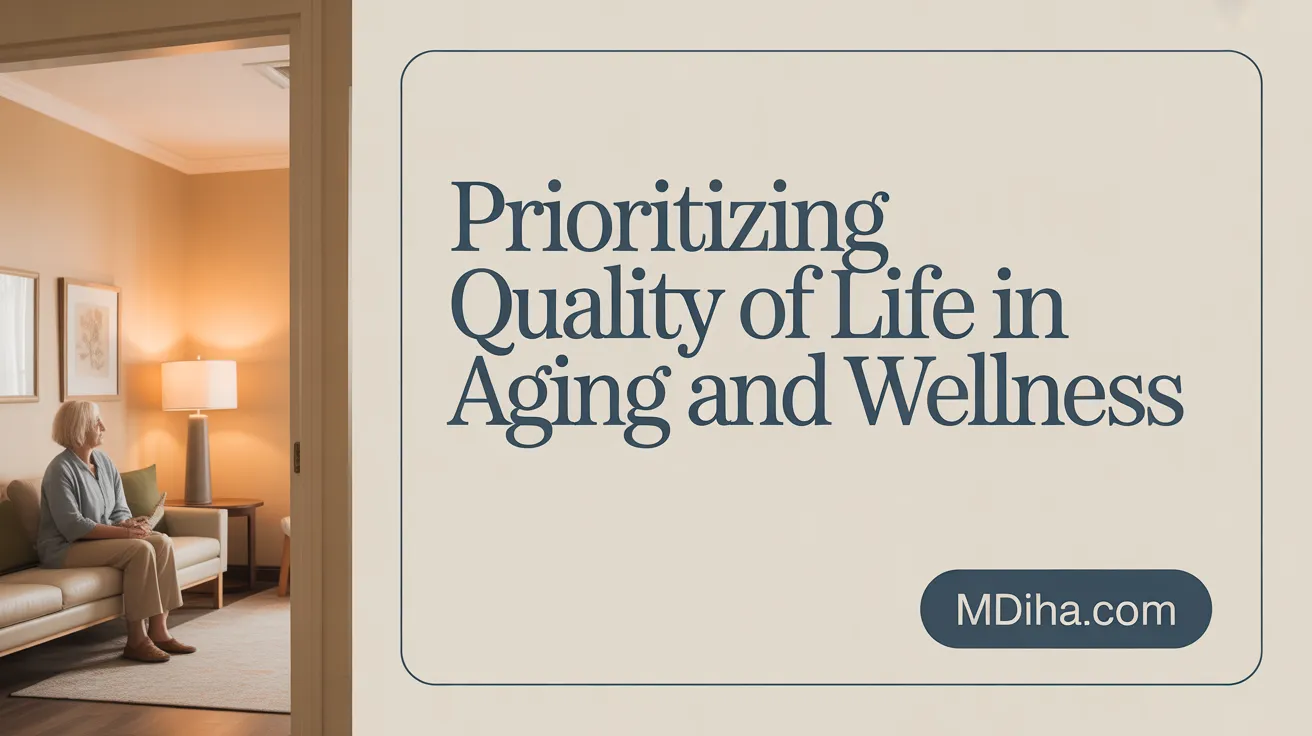
Why Do Consumers Prefer Healthspan Over Lifespan?
Many individuals today prioritize quality of life as they age, rather than simply living longer. Surveys show that nearly 80% of people want to extend their healthspan — the period of life spent in good health — provided it comes with guarantees of health. This shift reflects a growing desire to avoid chronic diseases, disability, and dependence that often accompany advanced age.
What Is Healthspan and Why Does It Matter?
Healthspan refers to the years of life lived free from serious illness, pain, or disability. Unlike lifespan, which counts total years lived, healthspan emphasizes the quality of those years. Promoting healthspan aligns with the goal of proactive healthcare, focusing on preventing disease and maintaining function.
Understanding Biological vs. Chronological Aging
Chronological age counts the years since birth, but biological age measures how well our tissues and organs are functioning, which can vary widely among individuals of the same chronological age. Progress in understanding and measuring biological age — through biomarkers like epigenetic clocks and telomere length — aims to guide interventions that slow or reverse the aging process.
How Does This Shift Influence Preventive Strategies?
Focusing on healthspan encourages the development of preventive medicine that targets the underlying mechanisms of aging. Interventions such as personalized lifestyle changes, dietary strategies, and emerging therapies aim to delay the onset of age-related diseases, thereby extending years of healthy living. This proactive approach has the potential to transform healthcare systems from reactive to preventative, improving quality of life while reducing long-term costs.
Lifestyle and Dietary Approaches to Promote Healthy Aging
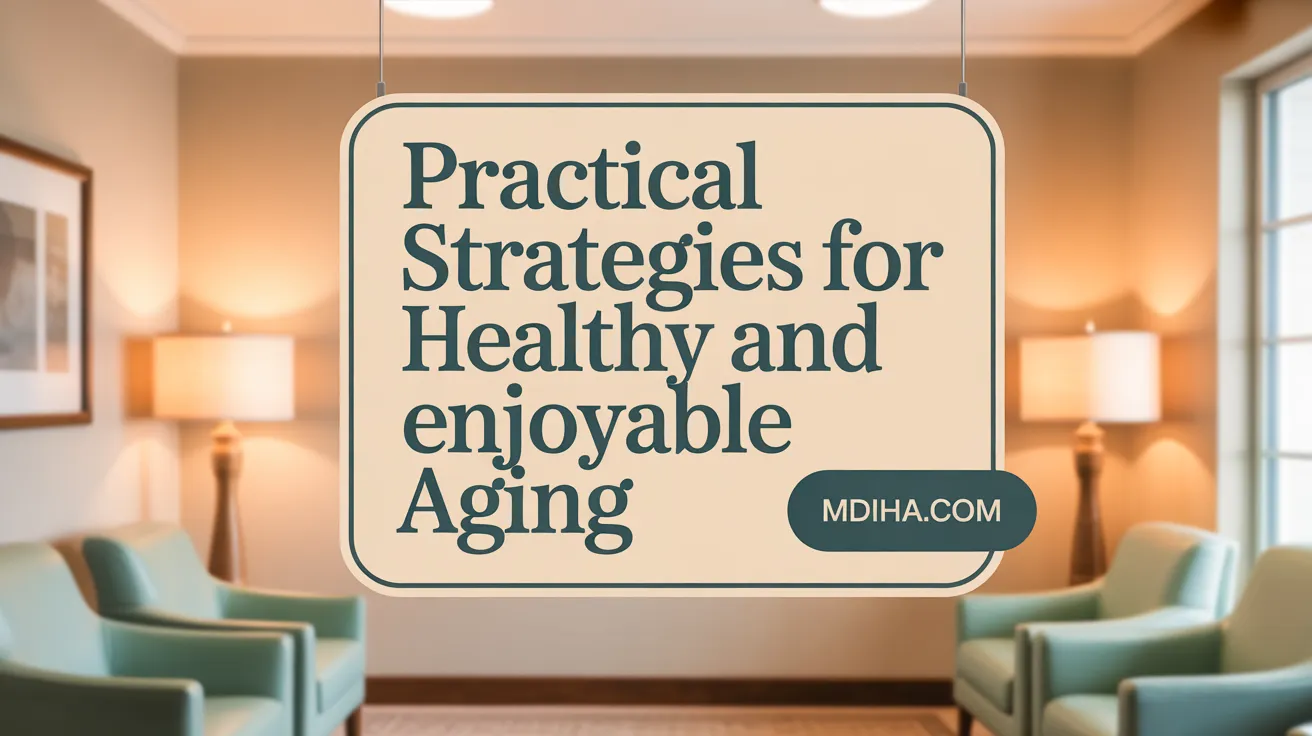
How does exercise and physical activity influence healthy aging?
Regular exercise is one of the most effective ways to enhance overall health and extend healthspan—the period of life spent in good health. Physical activity improves cardiovascular health, preserves muscle mass, maintains mobility, and supports metabolic functions. Studies show that consistent exercise reduces the risk of chronic diseases such as diabetes, heart disease, and neurodegenerative disorders. In addition, physical activity stimulates cellular processes that delay biological aging markers and promotes better immune function.
What dietary strategies are beneficial for longevity?
Diet plays a vital role in aging and health. Caloric restriction, involving reduced calorie intake without malnutrition, has demonstrated lifespan extension benefits in animal models. Intermittent fasting, which cycles between periods of eating and fasting, has also gained attention for its potential to improve metabolic health, reduce inflammation, and delay aging.
The Mediterranean diet, rich in fruits, vegetables, whole grains, nuts, olive oil, and lean proteins, is associated with reduced age-related diseases and increased lifespan. These dietary patterns generally support mitochondrial health, reduce oxidative stress, and promote autophagy—cellular cleaning processes that remove damaged components.
Why is oral health important for aging?
Good oral hygiene is often overlooked, yet it significantly impacts systemic health. Gum disease and poor oral health have been linked to cardiovascular conditions, diabetes, and respiratory infections. Maintaining healthy teeth and gums through regular brushing, flossing, and dental check-ups supports not only a functional mouth but also reduces systemic inflammation, which accelerates aging and age-related decline.
How do prebiotics and probiotics contribute to longevity?
Emerging evidence suggests that gut microbiome health influences aging processes. Prebiotics, which are dietary fibers nourishing beneficial gut bacteria, and probiotics, live beneficial bacteria, help maintain a balanced microbiome. A healthy microbiome reduces gut inflammation, improves nutrient absorption, and supports immune function—factors crucial in preventing age-associated chronic inflammation, or "inflammaging." This modulation can improve metabolic health, cognitive function, and resilience against age-related diseases.
| Aspect | Benefit | Specific Examples |
|---|---|---|
| Exercise and Physical Activity | Enhances cardiovascular health, muscle preservation | Aerobic exercises, resistance training |
| Dietary Strategies | Supports metabolic health, reduces inflammation | Caloric restriction, intermittent fasting, Mediterranean diet |
| Oral Health | Lowers systemic inflammation, prevents disease | Regular brushing, dental visits |
| Microbiome Modulation | Reduces inflammation, improves immune response | Prebiotics (fiber-rich foods), probiotics (yogurt, supplements) |
Incorporating these lifestyle and dietary approaches into daily routines offers a practical and accessible path toward healthier aging. As scientific research progresses, these interventions form a foundational component of proactive longevity strategies aimed at extending healthspan and optimizing quality of life.
Nutraceuticals and Supplements Targeting Longevity Pathways

What emerging therapies, interventions, and diagnostic tools are aimed at promoting healthy aging?
Recent advances in longevity science highlight the potential of nutraceuticals and supplements to support the body's natural mechanisms against aging. Among these, NAD+ precursors such as nicotinamide riboside (NR) and nicotinamide mononucleotide (NMN) are at the forefront. These compounds help replenish declining cellular NAD+ levels, which are crucial for efficient DNA repair, mitochondrial biogenesis, and overall cellular health.
Spermidine, a natural polyamine found in foods like wheat germ, soy, and aged cheese, has gained attention for its ability to induce autophagy. This cellular cleaning process helps remove damaged proteins and organelles, thereby promoting cognitive health and potentially lowering mortality rates.
Other promising supplements include alpha-ketoglutarate, a metabolite involved in energy production and cellular aging, and resveratrol, a polyphenol with antioxidant properties known to activate pathways related to longevity, such as sirtuins.
In addition to these, senolytics are emerging as a new class of therapies that target senescent cells—cells that have stopped dividing and contribute to tissue dysfunction and inflammation. Eliminating these cells may help reduce chronic inflammation and improve tissue function, thus supporting healthier aging.
While these supplements show considerable promise in preclinical and early human studies, ongoing research seeks to validate their safety, optimal dosages, and long-term efficacy.
| Supplement Type | Primary Function | Current Research Status | Notable Sources |
|---|---|---|---|
| NAD+ precursors (NR, NMN) | Support DNA repair, mitochondrial function | Several clinical trials underway | Milk, fish, certain vegetables |
| Spermidine | Induce autophagy, cognitive preservation | Early human trials showing positive effects | Aged cheese, wheat germ, soy |
| Alpha-ketoglutarate | Energy production, cellular aging support | Preclinical promising results | Naturally in meat, spinach |
| Resveratrol | Activate longevity pathways, antioxidants | Mixed results, ongoing validation | Grapes, red wine, berries |
| Senolytics | Remove senescent cells, reduce inflammation | Early-stage human trials showing safety and efficacy | Quercetin,Dasatinib (drug combo) |
To explore these innovations further, the search term 'Nutraceuticals and longevity supplements research' can reveal the latest scientific studies and experimental therapies advancing the field of healthy aging.
Pharmacological Interventions: Metformin, Rapamycin, and Beyond
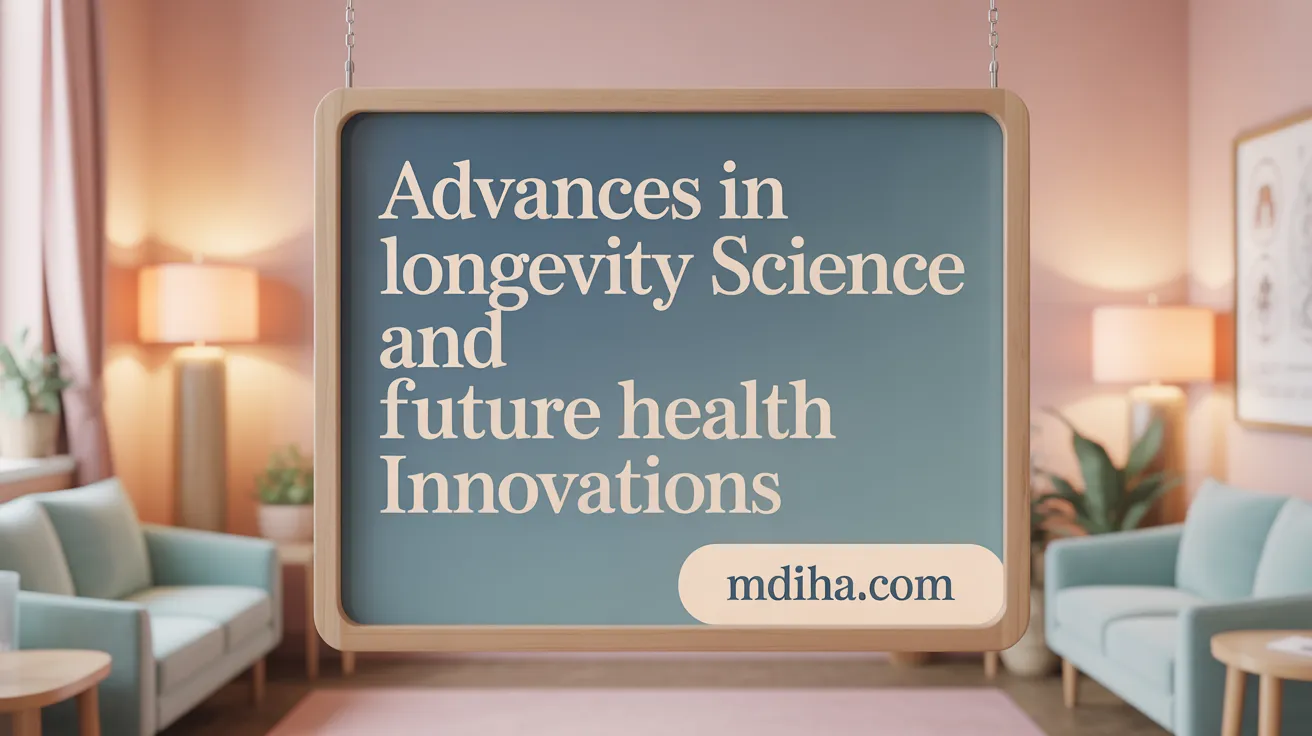 Metformin and rapamycin are at the forefront of pharmacological strategies aimed at promoting healthy aging. Their mechanisms of action are rooted in modulating critical aging pathways.
Metformin and rapamycin are at the forefront of pharmacological strategies aimed at promoting healthy aging. Their mechanisms of action are rooted in modulating critical aging pathways.
Metformin, traditionally used in diabetes management, exerts its anti-aging effects through multiple mechanisms. It inhibits mitochondrial complex I, which reduces cellular energy output and decreases oxidative stress. Activation of AMP-activated protein kinase (AMPK) by metformin enhances cellular energy homeostasis and improves insulin sensitivity. Additionally, it influences the gut microbiome and lowers inflammation, contributing to its potential role in extending healthspan.
Rapamycin, on the other hand, targets the mTOR pathway—specifically, biology’s key nutrient-sensing mechanism. It inhibits TORC1, a complex that promotes anabolic processes and cell growth. By doing so, rapamycin mimics the effects of caloric restriction, a proven longevity enhancer in various species. Animal studies show rapamycin can extend lifespan and improve biomarkers of aging, such as autophagy and mitochondrial function.
Current research emphasizes the translational potential of these drugs. Numerous clinical trials are underway to evaluate safety, dosing, and efficacy in humans. These studies aim to determine whether intervention with metformin or rapamycin can delay age-related diseases and extend both lifespan and healthspan.
Emerging therapies seek to combine or optimize these interventions. For example, studies are exploring the combined use of rapamycin and metformin, hypothesizing that their synergistic effects on different aging pathways may produce superior outcomes. Besides, research investigates novel compounds that target related pathways like cellular senescence, inflammation, and mitochondrial health.
Diagnostic tools such as aging clocks based on DNA methylation and immune system assessments help measure biological age and monitor intervention effectiveness. These advancements support a personalized, data-driven approach in longevity medicine.
Understanding and harnessing these interventions’ mechanisms could revolutionize aging management, shifting the paradigm from reactive to proactive health maintenance. Continuous research and clinical trials are crucial to translate these promising findings into safe, accessible therapies for the wider population.
Non-Pharmacological Therapies Enhancing Healthspan

What emerging therapies, interventions, and diagnostic tools are aimed at promoting healthy aging?
Non-pharmacological strategies are increasingly recognized for their potential to extend healthspan by improving overall physiological resilience. These approaches include sauna bathing, cold immersion, light therapy, hyperoxia-hypoxia training, and hyperbaric oxygen therapy.
Sauna bathing and cold immersion are known to stimulate the body's stress response, promoting cardiovascular health, metabolic regulation, and neuroprotection. Regular sauna use has been associated with reduced cardiovascular events and mortality, while cold immersion can enhance circulation and decrease inflammation.
Light therapy, which involves exposure to specific wavelengths of light, supports circadian rhythm regulation and mitochondrial function. Hyperoxia-hypoxia training alternates between oxygen-rich and oxygen-poor environments, challenging the body's adaptive mechanisms, leading to improved metabolic efficiency and cellular stress responses.
Hyperbaric oxygen therapy (HBOT) involves breathing pure oxygen in a pressurized room, which can increase tissue oxygenation and has shown promise in reducing inflammation, stimulating stem cell proliferation, and improving neuroplasticity. Clinical studies suggest that HBOT may slow some aging processes and aid in tissue repair.
Mechanistically, these therapies promote mitochondrial biogenesis, reduce systemic inflammation, and activate cellular repair pathways. Although still emerging, early clinical evidence demonstrates their capacity to delay aging-associated decline, making them promising adjuncts in preventive longevity medicine.
By integrating these modalities into personalized health strategies, individuals may improve their resilience against age-related diseases, ultimately enhancing their healthspan in a scientifically supported manner.
Cutting-Edge Biotechnologies: Gene Editing, Stem Cells, and Regenerative Medicine
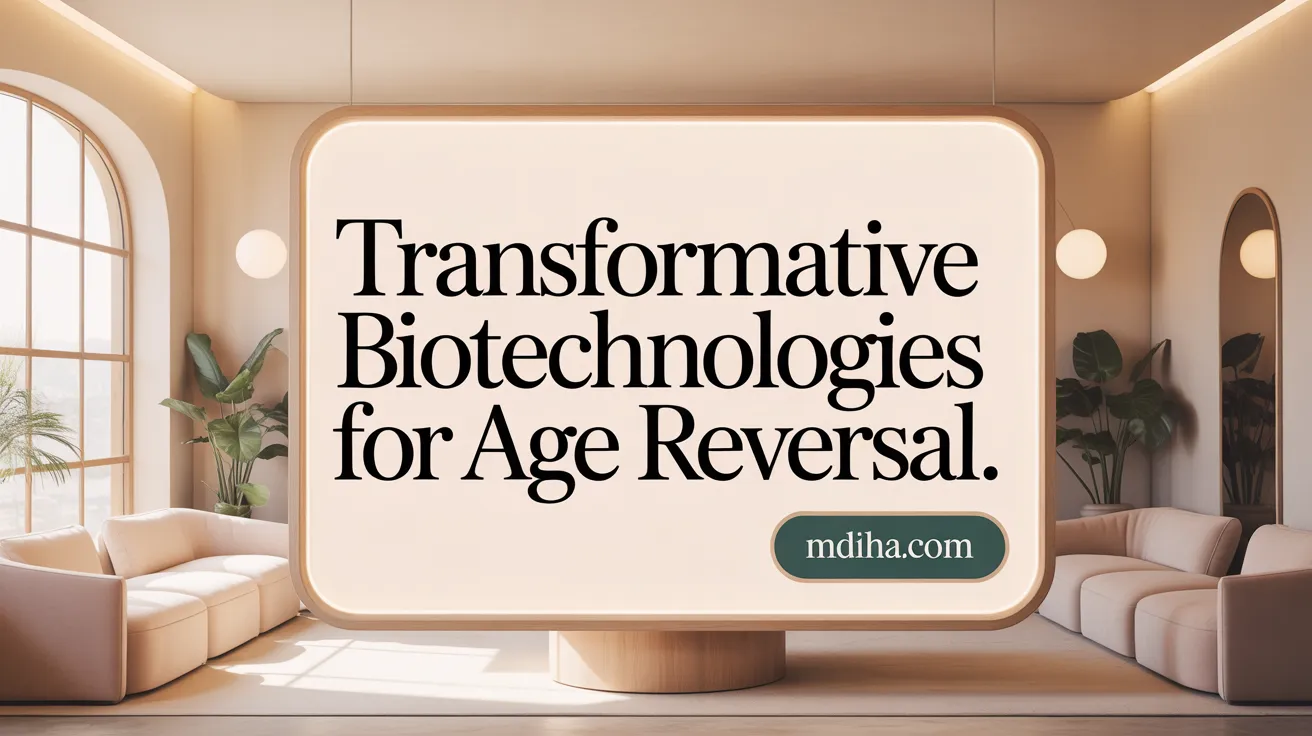
What are the future prospects and advancements in preventive longevity medicine?
Biotechnologies such as gene editing, notably using CRISPR, and regenerative medicine are transforming the landscape of age-related health management. These innovations aim to repair damage accumulated with aging, manipulate genetic pathways that regulate lifespan, and rejuvenate tissues.
CRISPR technology allows precise editing of genes associated with aging, including those involved in genomic stability and cellular senescence. Future developments focus on targeting aging genes to slow down or even reverse cellular deterioration.
Stem cell therapies and tissue engineering represent significant strides in restoring lost organ function. By replacing damaged or exhausted cells, they offer the potential to rebuild tissues affected by age-related decline. These approaches are being refined to enhance safety, efficacy, and integration with the body's existing systems.
Regenerative strategies extend beyond cell replacement. Researchers are exploring ways to induce cellular rejuvenation using growth factors, cytokines, and bioengineering techniques that repair and restore tissue health. This multidisciplinary effort is driven by advances in understanding the biological hallmarks of aging, including mitochondrial dysfunction and cellular senescence.
The quest for preventive longevity medicine is bolstered by these innovations, which together foster the development of therapies capable of delaying age-associated diseases, preserving physiological functions, and extending healthspan. As research progresses, clinical translation is becoming more feasible, promising a future where aging itself may be modifiable.
To learn more about these promising fields, search for "Gene editing and regenerative medicine in longevity." This ongoing research underscores the potential to transform aging from an inevitable decline into a manageable, even reversible process.
Digital Therapeutics and AI: Revolutionizing Longevity Healthcare
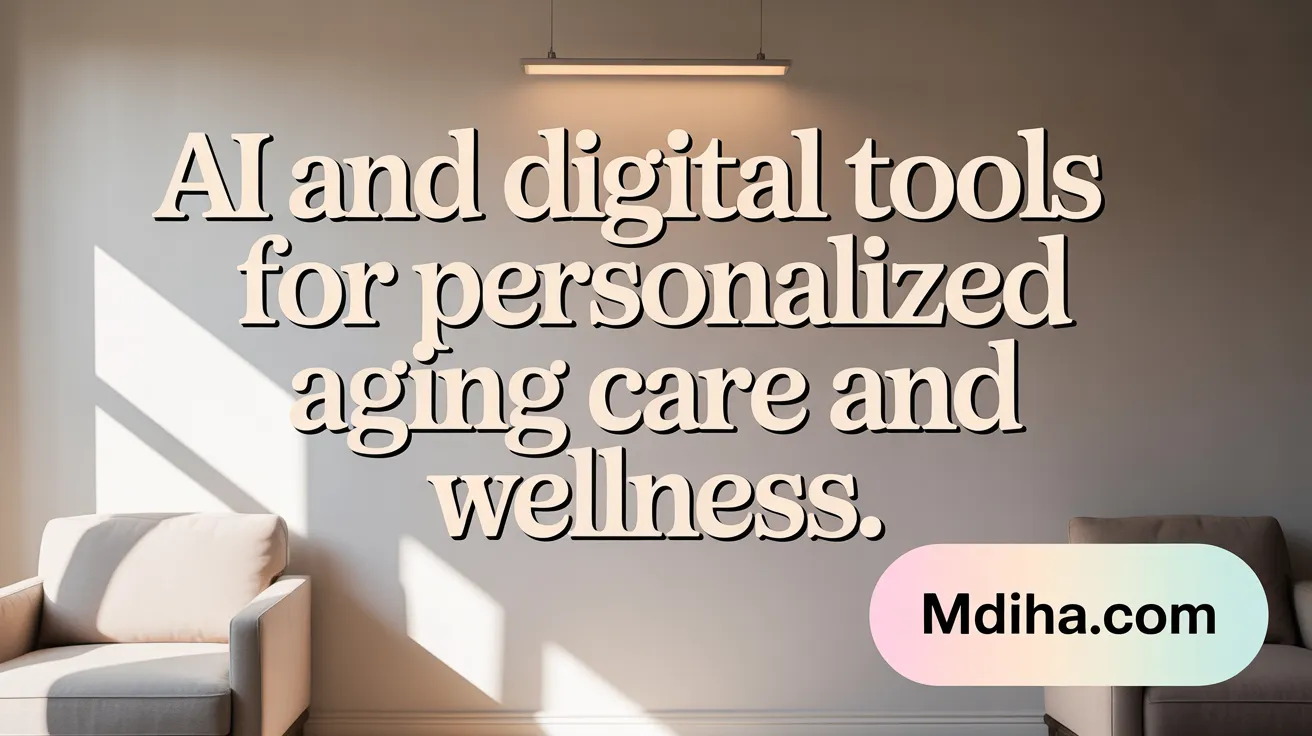
What is the role of artificial intelligence, digital therapeutics, and technological advancements in longevity healthcare?
Artificial intelligence (AI) and digital health technologies are transforming how we approach aging and health optimization. AI-driven diagnostics and analysis of biomarkers enable early detection of biological aging and age-related diseases, offering opportunities for proactive interventions. For example, AI algorithms interpret complex data from genetic, epigenetic, and physiological sources to identify individual health risks.
Drug discovery also benefits from AI by faster screening and predicting the efficacy of potential longevity therapies. Machine learning models analyze thousands of compounds and simulate biological responses, significantly reducing development time.
Digital therapeutics (DTx) are software-driven interventions designed to prevent, manage, or treat chronic conditions linked to aging. These evidence-based programs can be delivered via smartphones or tablets, offering scalable solutions for health promotion, medication adherence, and behavioral change.
Wearable devices such as the Apple Watch Series 10 and Fitbit monitor vital signs—heart rate, activity levels, sleep patterns, and more—that correlate with biological age. Continuous monitoring allows early detection of deviations indicating health decline or emerging diseases.
Personalized health coaching using AI analysis of individual data fosters engagement. Features like gamification, tailored feedback, and behavioral nudges motivate longevity-friendly behaviors such as exercise, healthy eating, and stress management.
In sum, the integration of AI, digital therapeutics, and wearable tech forms a comprehensive framework. This ecosystem supports early diagnosis, personalized treatment plans, and sustained engagement aimed at extending healthspan and overall quality of life.
Data-Driven Personalized Healthcare and Preventive Strategies

What are the future prospects and advancements in preventive longevity medicine?
The future of longevity medicine is set to be transformed by the integration of advanced data analysis, emerging biomarkers, and innovative digital tools. Central to these developments is the shift towards personalized healthcare, which leverages genetic profiles, biomarker data, and lifestyle information.
By interpreting this wealth of data through artificial intelligence (AI) and machine learning (ML), clinicians can develop highly individualized preventive plans. This approach allows for early detection of aging signs, risk stratification, and precise interventions tailored to each person's unique biological age and health trajectory.
Remote health monitoring via wearable devices and telemedicine platforms will become commonplace, offering continuous health insights and real-time feedback. Devices like smartwatches and fitness trackers monitor vital signs, sleep patterns, and physical activity, helping individuals and healthcare providers optimize health strategies proactively.
This technological synergy promises to extend healthspan significantly, delaying the onset of age-related diseases while enhancing quality of life. As research advances, we anticipate the emergence of comprehensive digital health ecosystems where predictive analytics and real-time monitoring shape preventive care.
| Strategy Component | Description | Impact on Longevity |
|---|---|---|
| Genetic Profiling | Analyzing DNA to identify genetic predispositions | Enables risk prediction and personalized therapies |
| Biomarker Analysis | Using DNA methylation clocks, telomere length, immune profiling | Tracks biological age, guides interventions |
| Lifestyle Data | Monitoring diet, exercise, sleep, and stress | Supports tailored lifestyle modifications |
| Environmental Data | Assessing exposome factors like pollution and toxins | Helps in minimizing environmental damage |
| AI and ML | Interpreting complex datasets for risk and treatment | Facilitates predictive, preemptive healthcare |
| Telemedicine and Remote Monitoring | Continuous health assessment | Ensures ongoing care and timely interventions |
These innovations align with a broader movement towards proactive, rather than reactive, aging management. Implementing these tools effectively requires overcoming regulatory hurdles, ensuring data privacy, and making therapies accessible to diverse populations. However, their potential to extend both lifespan and healthspan makes them a cornerstone of future longevity strategies.
Challenges in Longevity Medicine Development and Implementation

What challenges and opportunities exist in the development and implementation of longevity medicine?
The field of longevity medicine is rapidly expanding, but it faces several significant hurdles that must be addressed to translate scientific advances into widespread clinical practice.
One major challenge lies in establishing strong scientific validation. While numerous biomarkers like epigenetic clocks and telomere length show promise, they are not yet validated as clinical endpoints to guide therapeutic decisions. This lack of standardized, reliable measures hampers the approval of interventions and the assessment of their effectiveness.
Safety concerns also pose obstacles. Many proposed therapies, including gene editing with CRISPR, stem cell treatments, and senolytics, require thorough evaluation for long-term safety. Ethical issues, particularly around genetic modifications, raise questions about consent, unintended effects, and societal impacts.
Regulatory gaps exist across different regions, and the absence of clear guidelines for the approval and use of anti-aging therapies complicates progress. International standards for aging biomarkers are still under development, and without them, responsible translation of research into treatments is hampered.
Cost and social inequality are high hurdles. Cutting-edge therapies tend to be expensive, which can widen health disparities, especially if access is limited by economic or geographic factors. Ensuring equitable access and preventing societal divisions are critical for sustainable implementation.
Moreover, misinformation and exaggerated claims threaten public trust. A proliferation of unproven products and hype can mislead consumers, making regulation and education vital for responsible dissemination.
Data privacy issues related to digital health tools and biomarker analysis also concern many. As digital therapeutics and wearables collect sensitive health data, protecting patient information becomes essential.
Despite these challenges, opportunities abound. Advances in personalized medicine, AI analysis, and innovative biotech promise safer and more effective strategies. Properly addressing regulatory, ethical, and social concerns through transparency, collaboration, and policy development can accelerate progress.
Overall, the future of longevity medicine hinges on overcoming these barriers with multidisciplinary efforts that balance innovation with responsibility to ensure safe, equitable, and scientifically sound healthspan extension.
Opportunities and Innovations Driving Longevity Medicine Forward
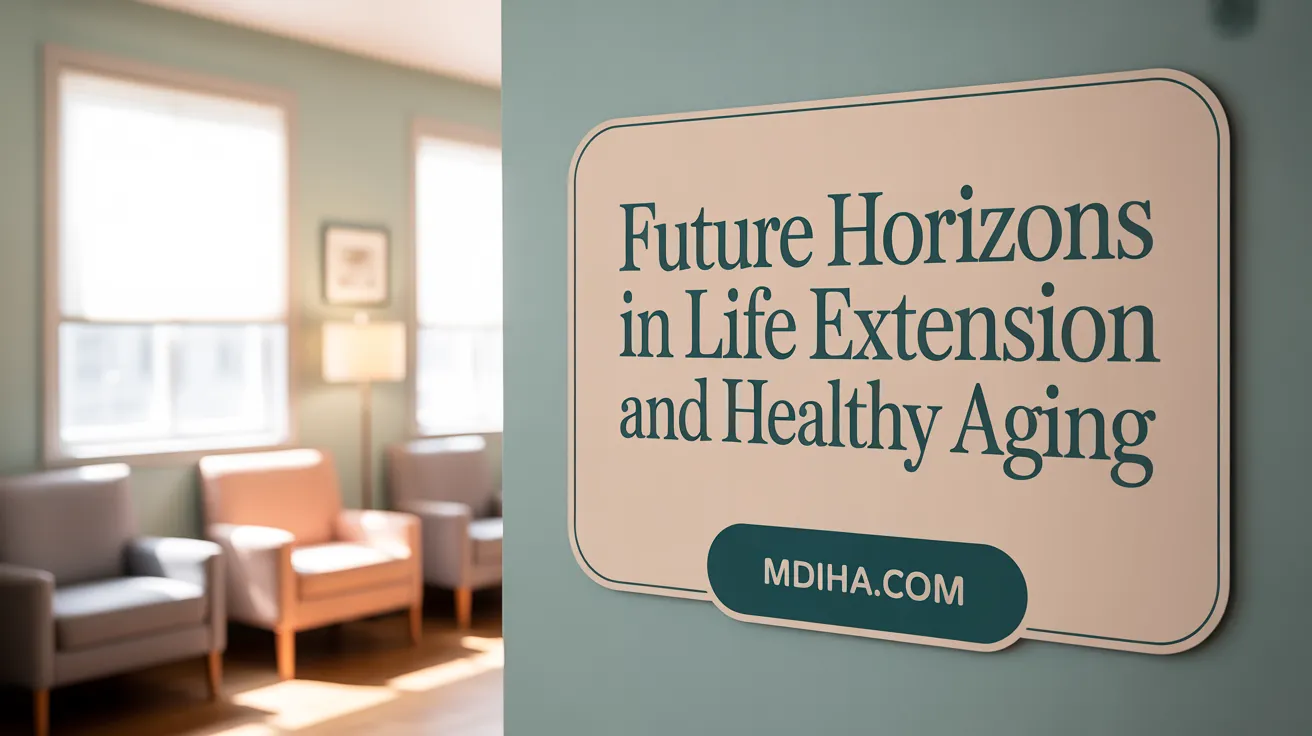
What advances are being made in gene editing and epigenetic reprogramming?
Recent breakthroughs in gene editing tools like CRISPR have opened new doors for correcting genetic mutations and modifying genes associated with aging. Epigenetic reprogramming techniques aim to reset cellular age markers, reversing age-related changes in gene expression. These approaches hold promise for repairing damage at the DNA and epigenetic level, potentially rejuvenating cells and tissues.
How are cellular rejuvenation therapies evolving?
Cellular therapies such as regenerative medicine and stem cell treatments are progressing rapidly. They aim to replace or repair damaged tissues and restore organ function, combating the physiological decline seen in aging. Emerging methods include tissue engineering and the infusion of rejuvenated stem cells, which may rejuvenate damaged organs and extend healthspan.
What role does AI play in creating personalized longevity interventions?
Artificial intelligence and machine learning are transforming personalized healthcare. By analyzing genetic, biomarker, and lifestyle data, AI algorithms help tailor interventions to each individual. This precision approach enhances the effectiveness of treatments and supports early detection of age-related diseases, leading to proactive health management.
Which combination therapies are being explored to target multiple aging pathways?
Researchers are increasingly combining drugs and modalities that target various hallmarks of aging simultaneously. For example, pairing senolytics with NAD+ boosters or autophagy enhancers aims to address cellular senescence, mitochondrial dysfunction, and inflammatory processes collectively. Such multi-targeted therapies could provide synergistic effects, delaying aging more effectively than single interventions.
Challenges and opportunities in development and implementation
Innovations like gene editing, epigenetic reprogramming, senolytics, and regenerative medicine open extraordinary possibilities for reversing or slowing aging. When integrated with AI-powered personalization and combination therapies, they could radically improve healthspan.
However, these advances come with challenges. Regulatory frameworks need to evolve to ensure safety and efficacy. Cost and accessibility issues must be addressed to prevent disparities. Ethical considerations around genetic modifications are crucial.
By fostering interdisciplinary research, supportive policies, and responsible innovation, we can seize these opportunities to transform longevity medicine and usher in a new era of proactive aging management.
Global Initiatives Accelerating Longevity Research and Collaboration

What insights have global initiatives and competitions like the Healthy Longevity Global Grand Challenge provided in advancing the field of longevity medicine?
Global initiatives such as the Healthy Longevity Global Grand Challenge play a significant role in pushing forward the boundaries of aging research. These programs act as catalysts by providing funding that spans from early-stage exploratory projects to more advanced, translational research. They create an environment where innovative ideas about extending healthspan and lifespan can be tested, refined, and scaled.
Participation in these initiatives is broad, involving more than 40 countries, which fosters a rich diversity of perspectives, expertise, and approaches. This international cooperation helps break down traditional barriers, promoting the sharing of knowledge and best practices across different healthcare systems and research cultures.
One of the major benefits of these global competitions is the promotion of cross-disciplinary collaboration. Researchers in biology, engineering, data science, and clinical medicine come together to develop comprehensive solutions that address complex aspects of aging. This integrated effort accelerates the discovery pipeline and enhances the potential for translating scientific breakthroughs into practical therapies.
Another critical insight from these initiatives is the emphasis on scalable and accessible solutions. As new therapies and technologies are developed, there is a focus on how they can be implemented broadly, ensuring that advancements in longevity science can benefit populations worldwide, not just in wealthy regions.
Funding mechanisms associated with these initiatives also incentivize innovation by supporting high-risk, high-reward projects that might not yet be attractive to traditional investors. This encourages researchers and startups to pursue groundbreaking ideas with the potential to radically transform aging and age-related diseases.
Overall, global health longevity programs serve as vital platforms for knowledge sharing, helping to accelerate the pace of innovation and make longevity advancements more scalable and equitable across different nations.
How do these international efforts impact the future of longevity medicine?
Through continuous collaboration, funding, and knowledge exchange, these programs are laying the groundwork for a future where aging biomarkers are better understood, therapies are more effective, and healthspan extension becomes a standard part of healthcare. The synergy created by these global efforts is essential to overcoming current barriers and realizing the potential of longevity science worldwide.
The Longevity Summit: Bridging Science and Clinical Application

Global Longevity Summit objectives and participants
The upcoming Global Longevity Summit, scheduled for October 2025 at the Genolier Innovation Hub in Switzerland, aims to unite over 300 of the world's leading experts in aging research, biotech innovators, clinicians, and investors. This gathering serves as a pivotal platform to showcase breakthrough discoveries in longevity science, regenerative medicine, and age-related disease prevention.
Focus on breakthroughs in longevity and regenerative medicine
At the core of the summit is the focus on recent advances such as new biomarkers for aging, including DNA methylation clocks and immune system assessments. These tools improve the understanding of biological age and diseases, helping customize interventions. Emerging therapies like senolytics, gene editing, stem cell treatments, and hyperbaric oxygen therapy are also highlighted, demonstrating progress toward repairing age-related damage and extending healthspan.
Platform for collaboration among researchers, investors, clinicians
The event offers significant opportunities for interdisciplinary collaboration. Researchers, biotech startups, and healthcare providers can connect with venture capitalists and investors looking to fund promising longevity projects. This synergy aims to accelerate the translation of laboratory advances into clinical treatments, making longevity interventions accessible to broader populations.
Addressing ethical, economic, and societal impacts
Discussions extend beyond science to include ethical considerations, such as equitable access to therapies and implications for societal aging. Economic impacts, including the integration of longevity medicine into health systems and insurance, are also addressed. This comprehensive approach ensures that scientific progress aligns with societal needs, fostering responsible advancement in life extension technologies.
| Aspect | Focus | Stakeholders | Expected Outcomes |
|---|---|---|---|
| Scientific | Biomarkers, regenerative therapies | Researchers, biotech startups | New clinical protocols and treatments |
| Investment | Funding for promising projects | Investors, venture capital | Increased capital flow into longevity science |
| Ethical/Societal | Access, policy, societal impact | Policymakers, ethicists | Guidelines for responsible development |
Through these discussions, the summit aims to bridge the gap between groundbreaking research and real-world applications, paving the way for healthier, longer lives.
Regulatory Frameworks and Standardization in Longevity Medicine

What are the current regulatory gaps for aging biomarkers and therapies?
Despite rapid scientific progress, existing regulations often lag behind innovations in aging research. Many biomarkers, such as epigenetic clocks and telomere length measures, lack validation as reliable clinical endpoints for guiding therapeutic decisions. Additionally, novel therapies like senolytics, gene editing, and regenerative techniques face uncertain regulatory pathways, making it challenging to bring them from lab to clinic.
Why is there a need for global standardization and clear guidelines?
The diverse approaches and varying standards across countries hamper the responsible development and application of longevity interventions. Standardizing biomarkers, such as DNA methylation clocks or microbiome assessments, is essential for comparable results and clinical utility. Clear international guidelines would facilitate research, approval processes, and safe clinical use, ensuring that promising therapies are both effective and safe.
How can responsible translation to clinical practice be promoted?
Implementing rigorous validation processes, establishing regulatory pathways specifically for aging interventions, and fostering collaboration among scientists, regulators, and clinicians are vital. Regulatory agility, combined with thorough safety evaluations, will ensure that innovative remedies, such as autologous stem cell treatments and pharmacological agents, are introduced responsibly.
What measures are needed to ensure safety and efficacy?
Robust clinical trials, transparent data sharing, and adherence to ethical standards are fundamental. Developing comprehensive safety profiles and efficacy benchmarks, along with international consensus on acceptable risk levels, will help protect patients and build public trust in longevity medicine advancements.
Equity and Access: Addressing Social Determinants in Longevity Health
How do income, education, and environment impact healthspan?
Social factors like income, educational attainment, and living conditions greatly influence an individual's healthspan—the period of life spent in good health free from chronic diseases. Wealthier individuals often have better access to healthcare, nutritious food, and healthy living environments, which support healthier aging.
Conversely, those with lower incomes may face barriers such as inadequate healthcare, poor housing, and limited access to preventive services. Education also plays a crucial role by empowering individuals with knowledge about healthy lifestyle choices and early screening practices.
Environmental exposures, including pollution, contaminants, and urban vs. rural living conditions, further shape aging outcomes by affecting respiratory, cardiovascular, and overall health.
What are the disparities in healthcare access and aging outcomes?
Disparities in healthcare access lead to uneven aging experiences among different socioeconomic groups. Marginalized populations often face delayed diagnoses, lesser preventive care, and limited participation in emerging longevity interventions.
These inequities result in diverse aging trajectories, with some groups experiencing earlier onset of age-related diseases and higher mortality rates that diminish healthspan.
What strategies can promote equitable longevity medicine?
To make longevity science accessible for all, policies should support affordability, community-based programs, and personalized care tailored to different socio-economic contexts. Expanding insurance coverage and subsidizing novel interventions can reduce financial barriers.
Developing culturally sensitive educational campaigns and increasing the diversity of clinical trial participants ensure treatments are effective across populations.
Moreover, integrating social determinants into healthcare planning and fostering collaborations between public health agencies, clinicians, and researchers can help tailor strategies to close gaps in aging outcomes.
How can we avoid worsening social inequalities?
Responsible progress in longevity medicine must prioritize fairness. Regulatory and commercial models should avoid exclusive access that benefits only the wealthy. Emphasizing open access databases, affordable diagnostics, and low-cost interventions can enable broader participation.
Ethical frameworks and global standards need to oversee equitable distribution of innovations, preventing the deepening of existing social divides as new therapies emerge.
| Aspect | Concern | Approach | Goal |
|---|---|---|---|
| Income & Socioeconomic Status | Limited access to cutting-edge treatments | Subsidies, insurance expansion, and tiered healthcare offerings | Broad equitable access |
| Education & Awareness | Lack of knowledge about longevity options | Community outreach, education campaigns, inclusive clinical trials | Informed and empowered populations |
| Environmental Factors | Exposure to harmful pollutants during aging | Policy changes, infrastructure investment, environmental regulations | Safer living conditions |
| Policy & Regulation | Regulatory gaps favoring affluent groups | International standards, transparency, ethical oversight | Fair distribution of benefits |
Efforts to address social inequities are essential to realizing the full potential of longevity science for all, ensuring that advancements in extending healthspan benefit society broadly rather than a select few.
Societal, Ethical, and Practical Considerations in Longevity Therapies

Ethical debates around anti-aging interventions
The rapid progress in aging research and emerging therapies raises important ethical questions. Should extending lifespan and healthspan be prioritized, especially when such interventions are costly and not yet universally accessible? Ethical debates focus on fairness, equity, and potential overpopulation concerns. Many argue that ensuring fair access and preventing socioeconomic disparities are essential for responsible development.
Public perception differences by demographics
Public attitudes toward longevity extend vary significantly across age groups and genders. Younger adults often prioritize aesthetic preservation and anti-aging treatments aimed at appearance. In contrast, older adults tend to focus on extending healthspan — living longer with good health. Men are generally more supportive of longevity therapies, possibly due to cultural norms around aging and health. These perceptions shape demand and influence policy development.
Cultural influences on longevity acceptance
Cultural backgrounds play a role in how anti-aging strategies are viewed. Societies that emphasize youthfulness and appearance may support cosmetic procedures, while cultures valuing vitality and wisdom may prioritize healthspan enhancements. Understanding these cultural perspectives helps tailor communication and policy strategies to promote responsible adoption.
Balancing innovation with social responsibility
While scientific breakthroughs fuel optimism, balancing innovation with social responsibility is crucial. Developing regulations, setting standards for biomarkers, and establishing international collaborations can ensure responsible translation of research. Transparency about risks, benefits, and limitations fosters public trust.
| Aspect | Consideration | Impact |
|---|---|---|
| Ethical concerns | Fair access, overpopulation, lifespan equity | Ensuring just distribution of therapies |
| Public perception | Demographics and cultural views | Influences acceptance, demand, and policy |
| Cultural differences | Societal values and norms | Shapes preferences and perceptions of longevity interventions |
| Regulatory and social policy | Ethics, safety, and responsibility | Guides development, limits misuse, promotes safety |
Achieving equitable and responsible progress requires ongoing dialogue among scientists, ethicists, policymakers, and the public. Aligning expectations with scientific capabilities will be pivotal for the sustainable development of longevity therapies.
Integrating Multidisciplinary Teams for Holistic Longevity Care

How do collaboration between biotechnologists, clinicians, data scientists, and ethicists enhance longevity research?
Advancing longevity science requires a team effort across various disciplines. Biotechnologists develop innovative therapies like gene editing and regenerative medicine. Clinicians translate research into clinical practice by designing treatment protocols and monitoring outcomes. Data scientists analyze vast health and genetic data, leveraging AI and machine learning to personalize interventions. Ethicists ensure that emerging therapies are developed and applied responsibly, respecting societal values and addressing ethical concerns.
This collaborative approach accelerates the identification of effective therapies, improves patient outcomes, and fosters innovation rooted in a comprehensive understanding of aging.
Why is holistic patient management essential in longevity medicine?
Longevity medicine aims to extend healthspan—the period of life spent in good health. Achieving this requires managing multiple interconnected physiological systems affected by aging, including cardiovascular, metabolic, neurological, and immune functions.
A holistic approach considers lifestyle factors, genetic predispositions, environmental exposures, and mental health. It involves personalized strategies such as tailored diets, exercise routines, stress management, and preventive screenings. Incorporating technological tools like wearables and digital therapeutics further enhances patient engagement and real-time health monitoring.
How does integrating lifestyle, pharmacological, and technological interventions transform healthcare?
Combining these strategies enables a proactive, precision-guided approach to aging. Lifestyle modifications—exercise, diet, sleep—serve as foundational interventions that improve overall resilience.
Pharmacological agents like metformin, rapamycin, and senolytics target specific aging pathways, potentially delaying age-related diseases.
Technology enhances these efforts by providing tools for early detection, continuous health tracking, and personalized treatment adjustments. Wearables monitor vital signs; digital therapeutics provide behavioral coaching; AI-driven analytics identify intervention opportunities.
What are the paradigm shifts needed in healthcare systems?
Traditional healthcare has been reactive, primarily treating diseases after they develop. Next-generation models must prioritize prevention and health optimization.
This involves establishing integrated care pathways that combine diagnostics, lifestyle counseling, medication, and digital support.
Healthcare systems need supportive policies, funding for research, clinician training, and patient education to adopt these innovative practices efficiently. Emphasizing early detection and customized interventions can significantly improve quality of life, reduce healthcare costs, and extend healthy lifespan.
Public Engagement and Transparent Communication in Longevity Science
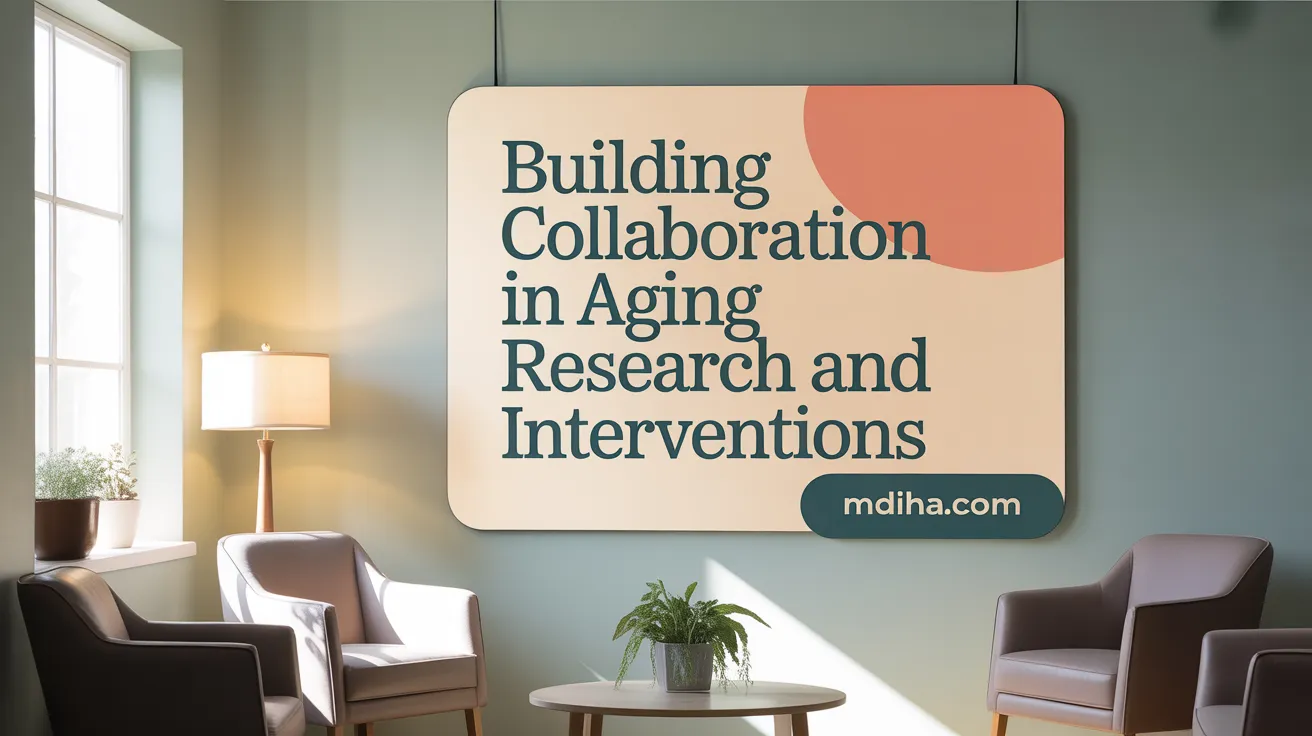
How can we align scientific progress with public expectations?
To bridge the gap between fast-moving longevity research and public understanding, transparent communication is essential. Experts must articulate realistic timelines and clarify what current interventions can and cannot do. By setting proper expectations, we can foster informed dialogues and prevent misconceptions from taking root.
How should misinformation and safety concerns be addressed?
Misinformation about anti-aging treatments spreads quickly, especially through social media. Addressing these issues requires authorities and scientists to proactively share verified data. Emphasizing safety, regulatory standards, and ongoing clinical trials reassures the public and encourages responsible adoption.
Why is education and continuous feedback important?
Educational initiatives targeted at diverse demographics improve awareness of aging biology and available interventions. Feedback loops involving patient experiences and community input help refine strategies, making longevity science more accessible and applicable.
How can trust be built for the adoption of longevity interventions?
Building trust involves transparency in regulatory processes, openly discussing risks and benefits, and involving stakeholders across multiple disciplines. Clear guidelines, peer-reviewed research, and ethical standards underpin confidence, paving the way for responsible mainstream integration of longevity medicine.
By focusing on transparent communication, the longevity community can foster informed public participation, dispel myths, and advance interventions that are safe, effective, and ethically sound.
| Strategy | Approach | Goal |
|---|---|---|
| Public Education | Launch awareness campaigns | Better understanding of aging science |
| Transparency | Share clinical trial progress | Build trust and manage expectations |
| Stakeholder Engagement | Involve communities and regulators | Foster responsible innovation |
| Misinformation Countermeasures | Use fact-checking platforms and official channels | Protect public from false claims |
Towards a New Era of Healthspan Optimization
Preventive longevity medicine stands at the cusp of revolutionizing how society approaches aging, transforming it from an inevitable decline to a manageable and even reversible process. Advances in understanding the biological mechanisms of aging, coupled with innovations in biotechnology, artificial intelligence, and digital therapeutics, underscore a paradigm shift toward personalized, proactive healthcare. While challenges remain in validation, regulatory frameworks, equity, and ethical implementation, strategic collaborations, global initiatives, and transparent communication offer a robust roadmap. By integrating multidisciplinary expertise and fostering public engagement, the future of longevity medicine promises a healthier, longer life that prioritizes quality, function, and well-being. This evolving field beckons continued investment, innovation, and responsible application to unlock the full potential of human longevity.
References
- Bridging expectations and science: a roadmap for the future of ...
- Longevity Medicine - The Future of Medicine
- Climbing the longevity pyramid: overview of evidence-driven ...
- The Future of Longevity Medicine from the Lens of Digital Therapeutics
- Human trials exploring anti-aging medicines - ScienceDirect
- Too old for healthy aging? Exploring age limits of longevity treatments
- Exploring the barriers and enablers to healthy longevity
- About Us | Global Longevity Summit - Informa Connect
- The Longevity Med Summit: insights on healthspan from cell to society
- The Future of Longevity Medicine from the Lens of Digital Therapeutics
